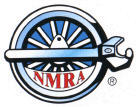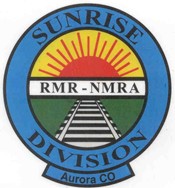Static Grass with Tom Frerichs
(Click on Image for Enlargements* Photos by Gary) |
|---|
Static grass is very uniform, but needs a ground foam foundation to 'stand' on,
applied with a diluted matte medium. Note that a plaster coat will soak up water.
Woodland scenic ground foams will be used to model spring in the Rockies. |
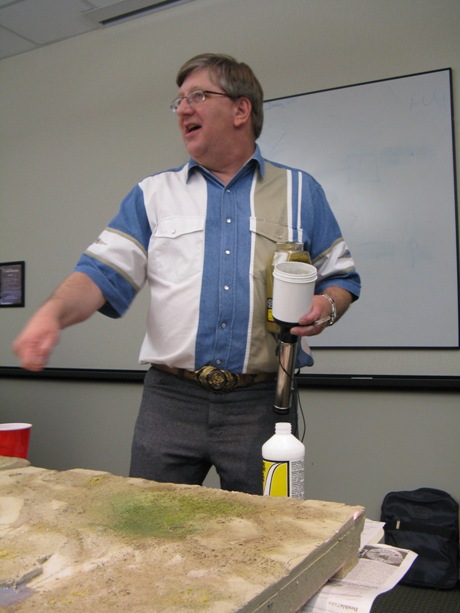
Tom Frerichs |
Matte can be applied with an airbrush, 5 psi, by misting overhead and letting it 'fall'
onto the ground (avoid spraying directly). In this case, without an airbrush, Tom
applies some woodlands scenic cement directly with a brush. |
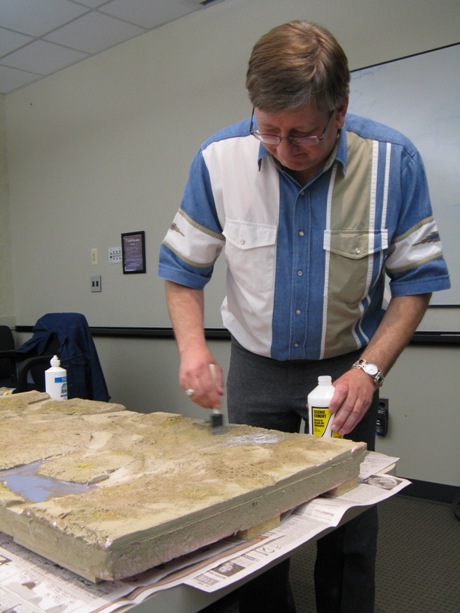
applying matte medium |
Here turf is applied by Tom by using a strainer. Adding fine turf at first, various
sizes are added. The coarser the material, less is added. Rule: The more coarse the
material, the less is used. Complete the area with ground foam before adding in the
static grass. |
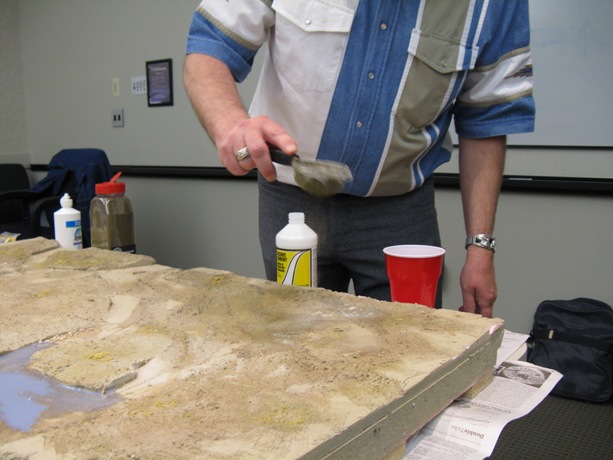
sprinkling on ground foams |
Use Woodland Scenics Grass Flock, which are rayon fibers, for the static grass. Wind-
Hurst generator can be used to make static. Tom is using a NOCH static grass shaker,
which uses a new 9v battery (low current). |
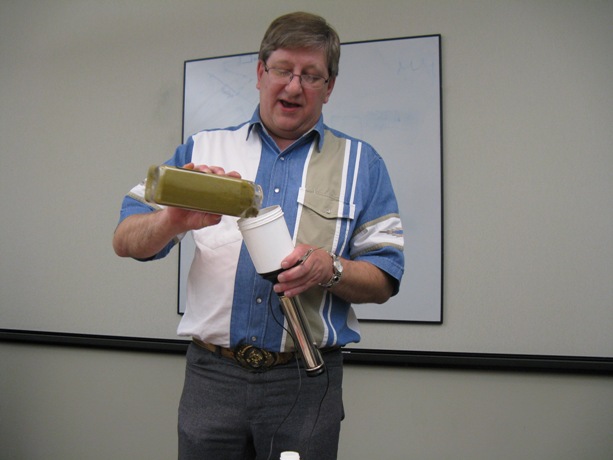
filling grass into static maker |
A pin is inserted in the wet matte medium, with a wire alligator clipped to it and
connected to the static shaker. The shaker is shaken or tapped by hand, to let the
grass flock through the screen onto the wet ground foam. The static causes the fibers
to stand on end, and eventually 'glue'permanently as the matte medium dries. To apply
near buildings, wrap them first in a damp paper towel, or mask with cardboard. Here,
a plaster overcoat of the ground before scenicing helps distribute the charge well
when soaked in water. |
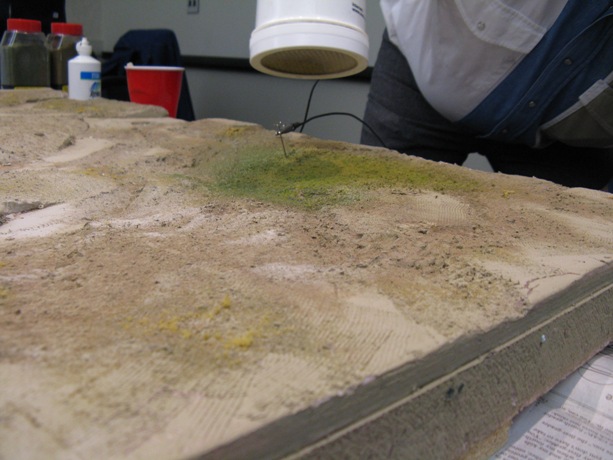
Making standing grass |
Scenery takes 3 elements: 1) Color - even zip (plaster & pigment) is the first piece.
2) Form - adding shapes with hills, castings, rock faces, etc. 3) Texture - adding dirt,
ground foams, then grasses give the 3 dimensional look to add depth. Use a cheap,
disposable camera to take pictures of ordinary scenery in natural lighting, to keep as
reference material. Textures: Dirt roads are not flat, add weeds, deadfalls, trash in
the city, bushes - all add 'texture'. |
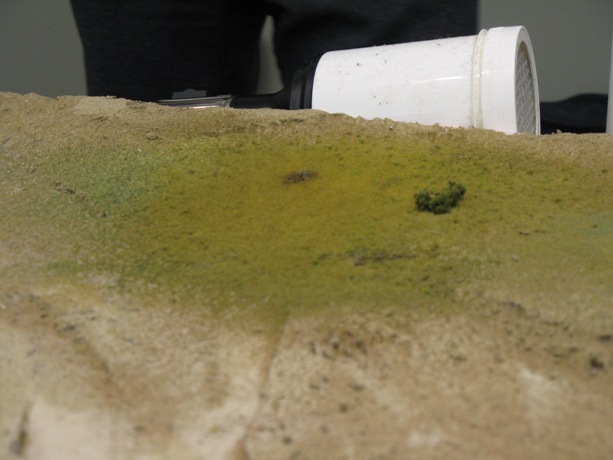
terrain with texture |
Railroad rooms are usually dim places with uneven lighting. Since incandescant lights
generate so much heat, fluorescents are often used, but result in 'blue' light. The
room can be brightened by replacing some fluorescents with 'red' bulbs.
Tip: Contact solution bottles can be used for diluted glue/matte medium. |
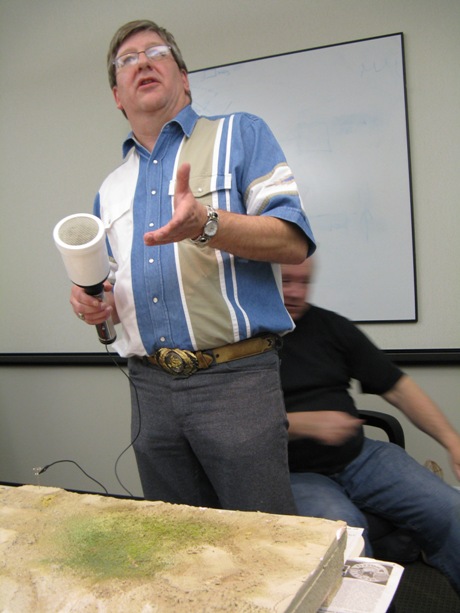
Don tries to give
Tom a 'shoulder' check
into the kidneys |
Scenery layer order: base, ground, exposed rock, masonry, bridge abutments, dirt, foam,
grass, small weeds, larger weeds, bushes, disturbed ground (excavations, graves, gopher
holes. Details: longer grass along fences and signposts, middle of roads, shoulders.
Final ballasting should be applied after the scenery next to the track is done. Industrial
sidings should have grasses. |
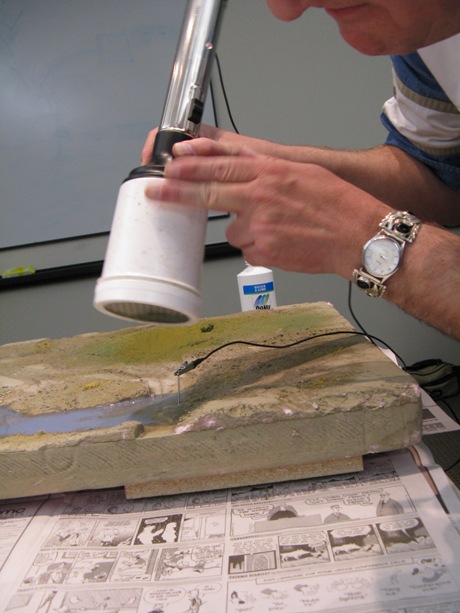
Tom 'taps' the grass
through the screen |
Texture & color recedes from the viewer. Farther from view, color and texture is lighter
and bluer. Toward the horizon, you look through thicker atmosphere containing more
moisture, which creates a haze and fades colors at distance. Over 18" away from viewer,
reduce textures, less browns, less dark color, more cerilion blue, less yellows.
Hobby liquitex acrylics can be used in place of Woodland Scenics. |
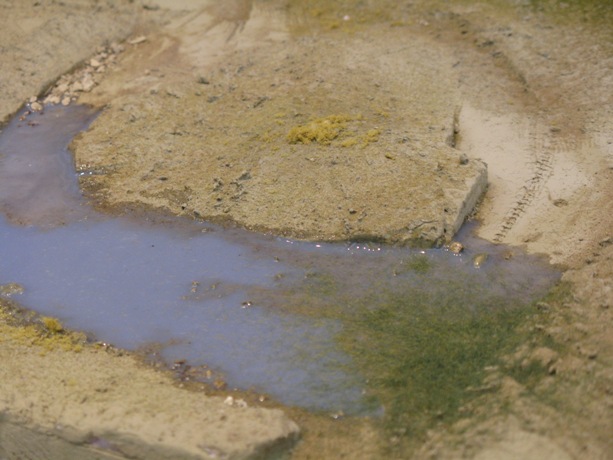
Static grass
along shoreline |
Scenery paint colors: Titanium White, Mars Black (Black+White=Grays), Burnt Sienna,
Raw Sienna, Raw Umber, Burnt Umber, Yellow Ochre, Burnt Ochre.
Paints can be blended with water and other colors. Mist spray matte medium to seal.
Spray upwards & let it rain. The matte finish cuts down sheen- it flattens and seals. |
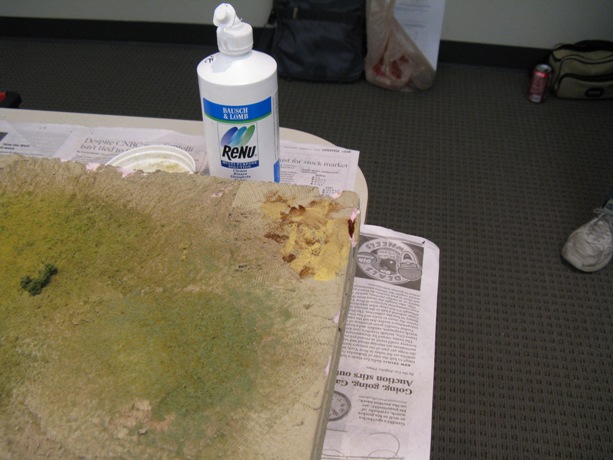
Yellow Ochre,
Burnt Sienna |
Lighter colors on top, yellow static grass atop greener static grass, to simulate
blossoming. Layer dark colors first (on bottom), -dark earth, then add grass (where
water gathers). Always work dark to light, and lighter further away. |
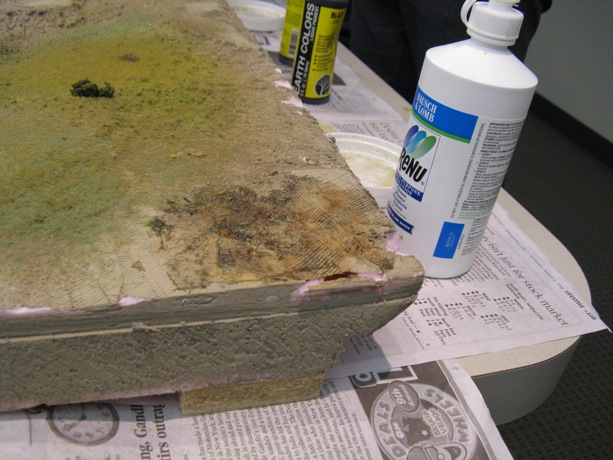
Burnt Umber &
Black added |
